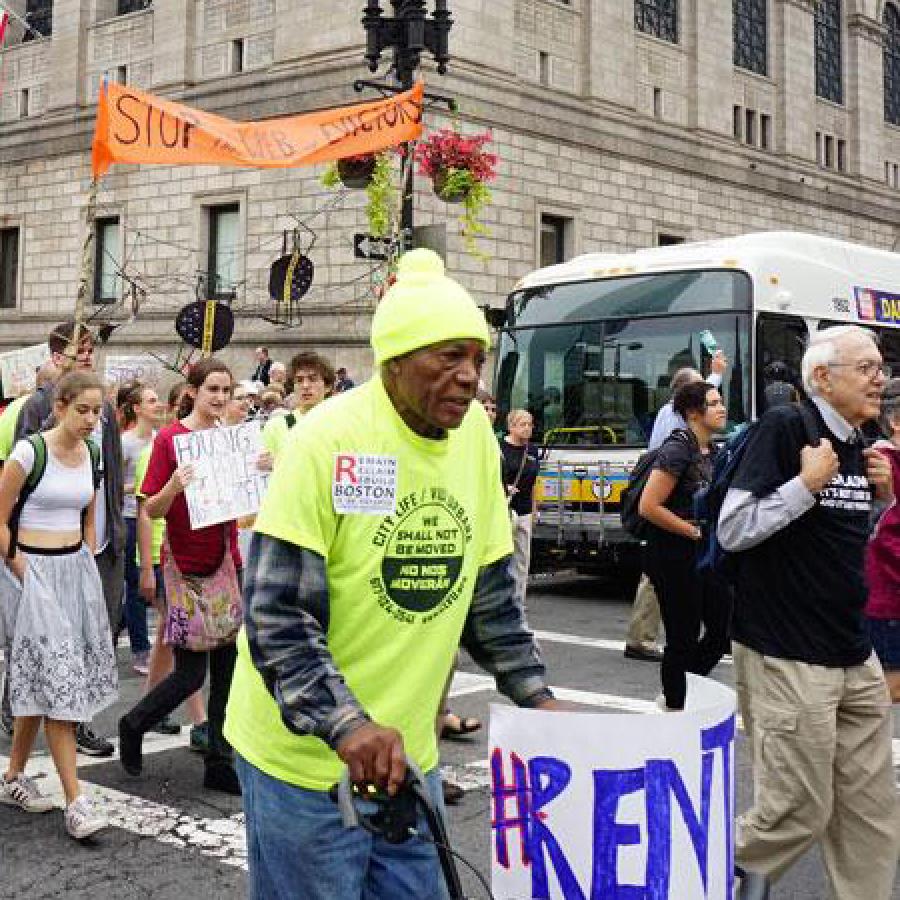National Infrastructure Week: Equitable Infrastructure Investments Can Transform Low-Income Communities and Communities of Color
At PolicyLink, we know that smart, targeted, equitable investments in infrastructure can have a transformative impact on low-income communities and communities of color. That’s why we are excited to join equity infrastructure advocates in California, and throughout the nation, for National Infrastructure Week—a time to collectively garner more public awareness and advocacy to support increased investments in infrastructure.
This week we will be posting a new blog each weekday exploring infrastructure equity in our home state of California. We encourage you to share our blog posts with your network and follow the conversation on Twitter using the hashtag #Build4Equity. Also, join the Union of Concerned Scientists and PolicyLink for a twitter chat on Wednesday, May 16 @ 12 pm PT/ 3 pm ET. The discussion will focus on the role of climate smart infrastructure in building community resilience, advancing climate justice, and fostering an inclusive economy. Register today and follow the chat on twitter at #Build4Resilience.
California’s changing demographics and the need for equitable growth
Over the last several decades California has undergone a radical demographic change. Today, people of color represent over 60 percent of all Californians. Because youth are at the forefront of this demographic transformation, there is a racial generation gap between old and young: 62 percent of Californians over age 65 are White, and 73 percent of those under age 18 are of color. Today’s elders and decision makers are not investing in the same educational systems and community infrastructure that enabled their own success. This investment gap puts all of California’s children—and the state’s economy—at risk. A growing body of research tells us that inequality is not only bad for those at the bottom of the income spectrum but subsequently puts everyone’s economic future at risk. Greater income equality contributes to more sustained economic growth and to more robust growth. California’s ability to maintain its leadership in the global economy hinges on its ability to remove barriers and create the conditions that allow all to flourish.
Investing in California’s Future
Unfortunately, California is not doing well. Our state has some of the highest income inequality in the nation and 14 million Californians—over 36 percent of our population and disproportionately people of color—live at or near the poverty level in communities that frequently lack the basic infrastructure of a healthy place. Decades of disinvestment, deeply entrenched patterns of discrimination, and a host of tax and land use laws affecting development patterns have isolated residents of these communities from quality opportunity and services, exposing them to environmental harms, and ultimately shortened lifespans.
Infrastructure is vital for sustaining and reinforcing community. The networks, roads, schools, drinking water, sewer systems, facilities, and properties that comprise public infrastructure define neighborhoods, cities, and regions. Unfortunately, too many Californians live in communities where critical infrastructure is deteriorating or is completely lacking. Residents of these infrastructure deficient places may be unable to access safe and affordable drinking water or wastewater treatment services; connect to good schools and jobs; benefit from libraries, health-care facilities, and emergency services; or safely walk, bike, or play in their neighborhoods. Over the next 10 years, an estimated $750 billion is needed to upgrade and repair our existing facilities and meet the needs of our growing population. While this problem is affecting the entire state, the duel burden of poor infrastructure choices in the past, and insufficient investment in infrastructure for the future falls heaviest on low-income communities and communities of color—the very people who constitute most of our population.
Recently, California has begun to get serious about tackling our infrastructure problems by dedicating new funding to transportation, climate infrastructure, water, schools, and housing. However, in most instances, equity has not been sufficiently incorporated into these discussions or woven into policies and programs. To ensure that our infrastructure investments contribute to a future of shared prosperity we must make sure our investments are guided by principles that expand equity for our most disinvested people and places. Here are four recommendations that can set us in the right direction.
Recommendations:
- Choose strategies that promote equity and growth simultaneously. Equity and growth have traditionally been pursued separately, but the reality is that both are needed to secure California’s future. The winning strategies are those that maximize job creation while promoting health, resilience, and economic opportunity for low-income workers and communities of color.
- Target programs and investments to the people and places most left behind. Public resources must be spent wisely. Focusing the state’s programs and investments on climate smart infrastructure that upliftsthe low-income families and communities that have been left behind will produce the greatest returns.
- Assess equity impacts at every stage of the policy process. As the policy process begins, and throughout, ask who will benefit, who will pay, and who will decide; and adjust decisions and policies as needed to ensure equitable impacts.
- Ensure meaningful community participation, voice, and leadership. California’s new majority needs avenues for participating in all aspects of the political process—from the basic act of voting to serving on boards and commissions to being elected as state leaders. Recognizing historical and ongoing patterns of exclusion and being intentional about establishing transparent processes for low-income communities and communities of color to meaningfully shape infrastructure decisions will lead to better programs and projects.
A half-century ago, California set a precedent for investing in its future—and succeeding. Under the leadership of Republican Governor Earl Warren and Democratic Governor Pat Brown, the state built a world-class education system and infrastructure that enabled a poor, uneducated population to create the world’s ninth largest economy. Bold leadership is needed to build the next economy, and having an equitable and inclusive society results in shared prosperity.


